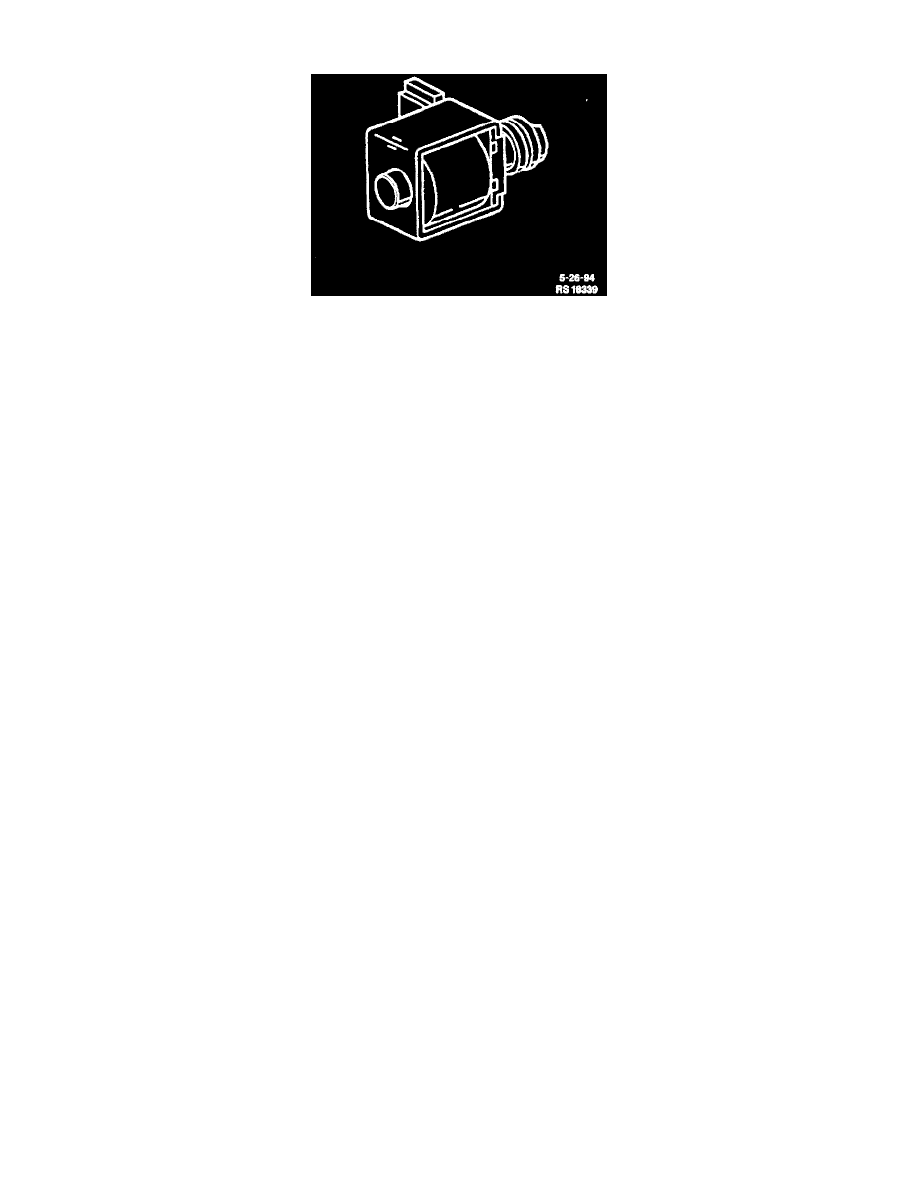Silhouette V6-191 3.1L VIN D TBI (1995)

Torque Converter Clutch Solenoid: Description and Operation
Torque Converter Clutch (TCC) Solenoid
PURPOSE
The Torque Converter Clutch (TCC) system uses a solenoid operated valve in the automatic transmission to couple the engine flywheel to the
output shaft of the transaxle through the torque converter. This reduces the slippage losses in the converter which increases fuel economy.
OPERATION
For the converter clutch to apply, two conditions must be met:
^
Internal transaxle fluid pressure must be correct.
^
The Powertrain Control Module (PCM) grounds a switch internally to turn "ON" a solenoid in the transaxle. This moves a check ball which will
allow the converter clutch to apply if the hydraulic pressure is correct, as described above.
The PCM controls the TCC apply solenoid by looking at several sensors:
^
Vehicle Speed Sensor - Speed must be above a certain value before the clutch can apply.
^
Engine Coolant Temperature (ECT) Sensor - Engine must be warmed up before clutch can apply.
^
Throttle Position (TP) Sensor - After the converter clutch applies, the PCM uses the information from the TP sensor to release the clutch when the
vehicle is accelerating or decelerating at a certain rate.
^
Another switch used in the TCC circuit is a brake switch which opens the 12 volt supply to the TCC solenoid when the brake is depressed.
^
On the 3T40 transaxle, a 3rd gear switch (normally open) is placed in series on the battery side of the TCC solenoid. This switch prevents TCC
application until the transaxle is in 3rd gear. Then the switch closes, completing the circuit to the PCM.
^
Vehicles equipped with A/C will allow TCC engagement at 35 mph when the A/C is selected "ON." Engagement will occur at a vehicle speed of
30 mph when A/C is selected "OFF."
RESULTS OF INCORRECT OPERATION
If the converter clutch does not apply, fuel economy may be lower than expected. If the vehicle speed sensor fails, the TCC will not apply. If the
3rd gear switch (3T40 only) does not operate, the TCC will either not apply at the right time or not apply at all.
The Torque Converter Clutch (TCC) system has different operating characteristics than an automatic transaxle without TCC. If the driver
complains of a "chuggle" or "surge" condition, the vehicle should be road tested and compared to a similar vehicle to see if a real problem exists.
Another TCC complaint may be a downshift felt when going up a grade, especially with cruise control. This may be clutch disengagement rather
than a downshift, due to the change in throttle position to maintain cruising speed. The owner's manual section on TCC operation should be
reviewed with the driver.
